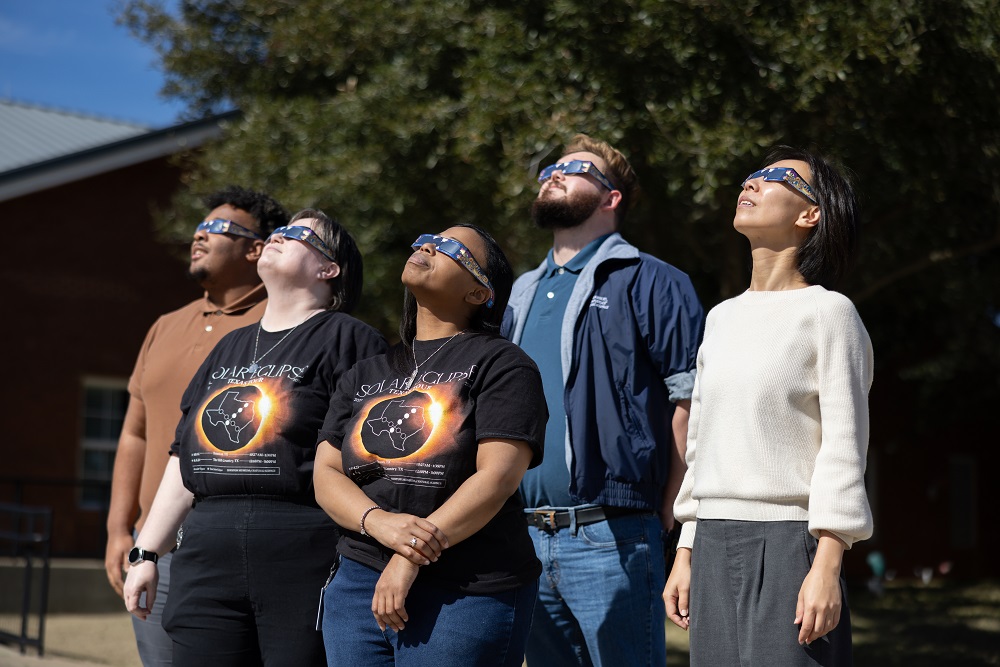
The New Moon of Monday, April 8, 2024, aligns with the Sun and the Earth well enough to cast its shadow onto Earth, causing an eclipse. Since the Moon is at perigee (closest approach to Earth) on April 7, its shadow does reach the Earth. Anyone in that shadow sees the Moon block all of the Sun–a total eclipse. (Last October the Moon was too far from Earth for the shadow to reach us, giving only an annular eclipse.) As the Moon moves in its orbit around Earth, its shadow describes a path across the Earth’s surface. Anyone in that path, shown in green on this site, sees the Moon in silhouette with the Sun’s beautiful corona around it. This corona is always present, but normally invisible in the glare of the Sun’s photosphere (‘surface’). Although we’re not quite in this path (Austin, the Metroplex, and western suburbs of San Antonio are, though), Houston is within the penumbra, where the Moon partially blocks the Sun. Therefore, we will see a partial solar eclipse, in which the Moon covers 94% of the Sun’s disk at most.
At 12:20 PM CDT, look for the Moon to take a ‘bite’ out of the Sun’s disk. Note that the eclipse happens around midday in spring. Therefore, the Moon and Sun are high in the south–over 2/3 of the way from the horizon to the zenith. Maximum eclipse, when the Moon covers 94% of the Sun’s disk, is at 1:40. The 6% left will be the ‘bottom’ of the Sun’s disk since we are south of the Moon’s path. Daylight will be significantly darker than at the peak of the October 14 eclipse. At this time you’ll easily see Venus to the Sun’s lower right and Jupiter to its upper left (and farther from the Sun than Venus). By 3:01, the Moon no longer blocks the Sun. After this, we’ll see our next partial solar eclipse in Houston on January 26, 2028. But that eclipse will cover only 14% of the Sun. Obviously, cloud cover would prevent us from viewing the eclipse. However, even an overcast sky will get noticeably darker around 1:40, which is maximum eclipse.
The Houston Museum of Natural Science (HMNS) is an excellent place to observe this eclipse. We have invited volunteers to set up solar telescopes at the Museum in Hermann Park and at our campus in Sugar Land. Each telescope we set up will be filtered to provide a safe view of the Sun. We will also project the Sun’s image in many different ways so you can observe the eclipse safely. At 10:30, 11:30, and 12:30 on April 8, the Burke Baker Planetarium will offer special $6 showings of Totality Over Texas. From 1:00 to 3:00, the Planetarium will show a live feed from Bandera, TX, with Museum staff in the path of totality. Even if clouds prevent us from seeing the eclipse outside, you can experience it through our planetarium shows.
Caution: Never look directly at the Sun with the naked eye or through an unfiltered telescope. Permanent eye damage will result. Purchase viewing glasses from the HMNS Museum Store.
HMNS Astronomer James Wooten also brings us monthly sky happenings. Click here for March.






